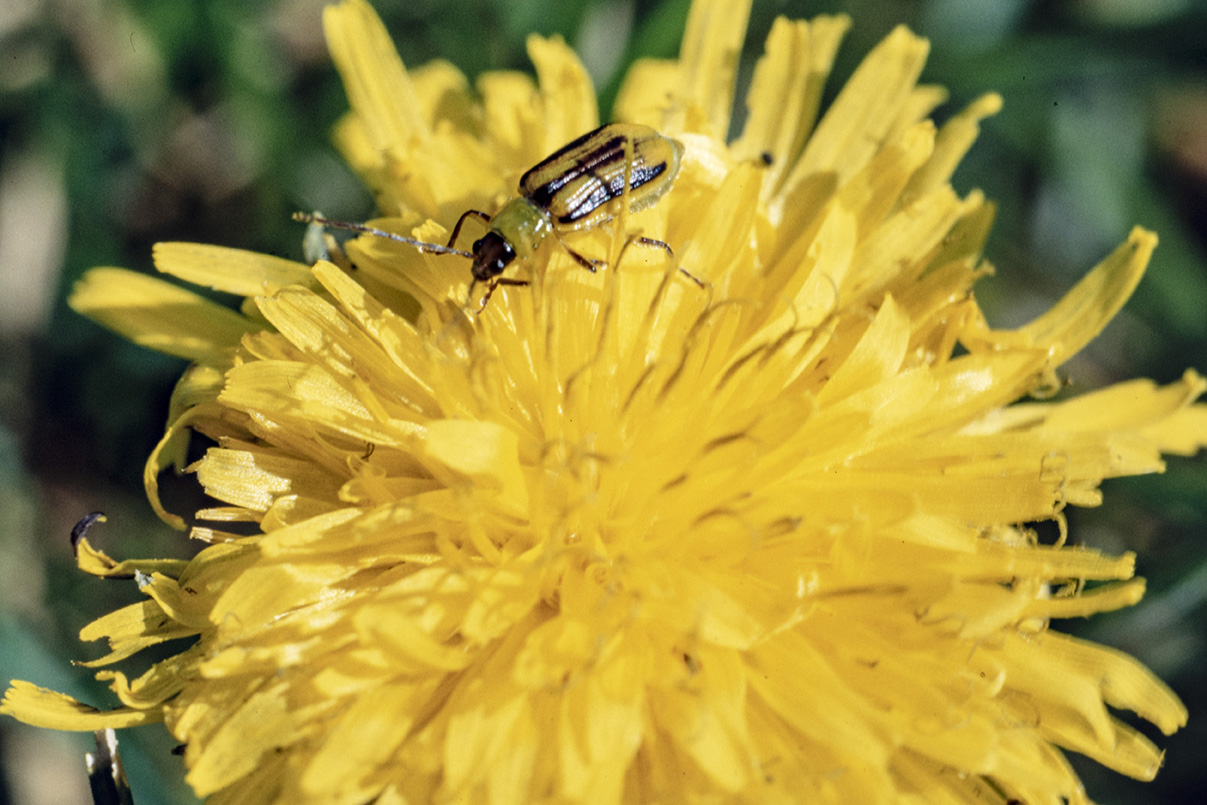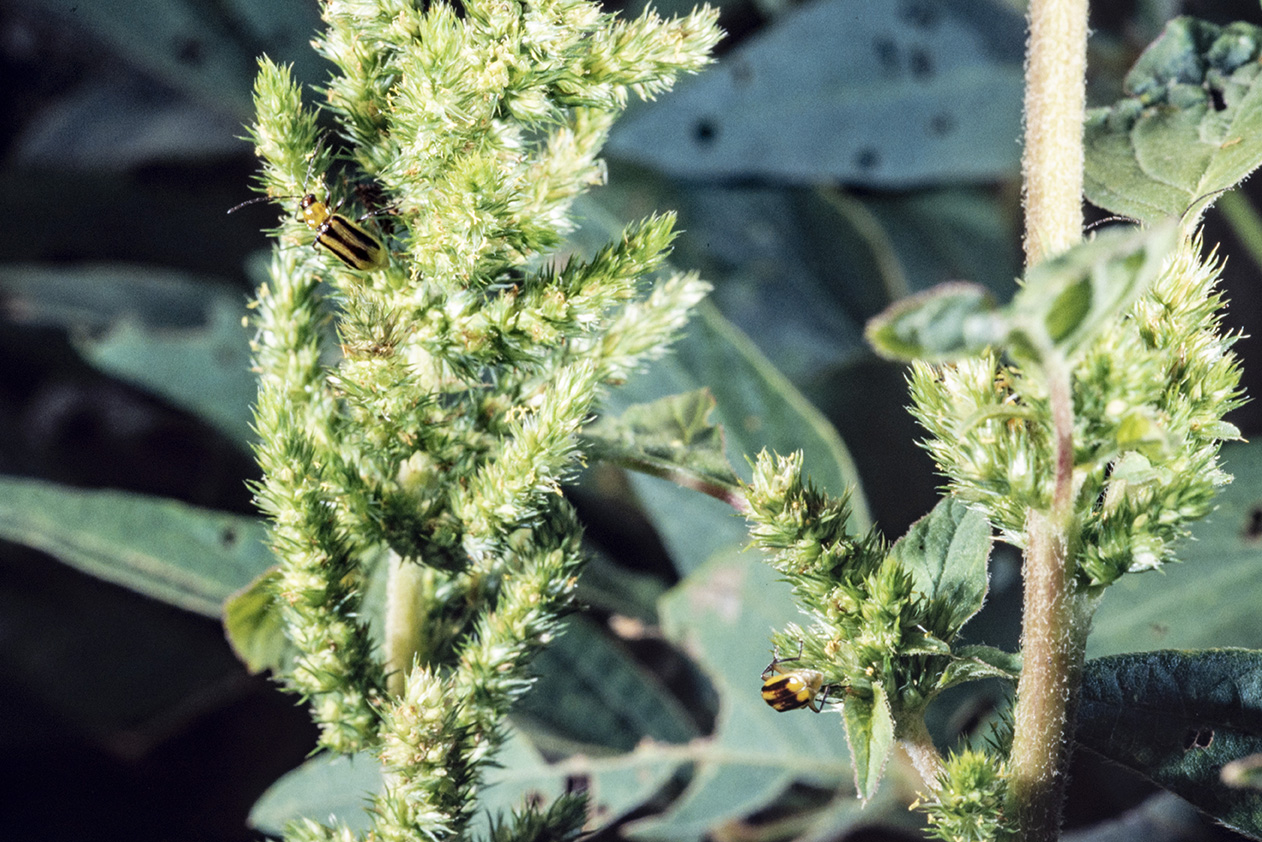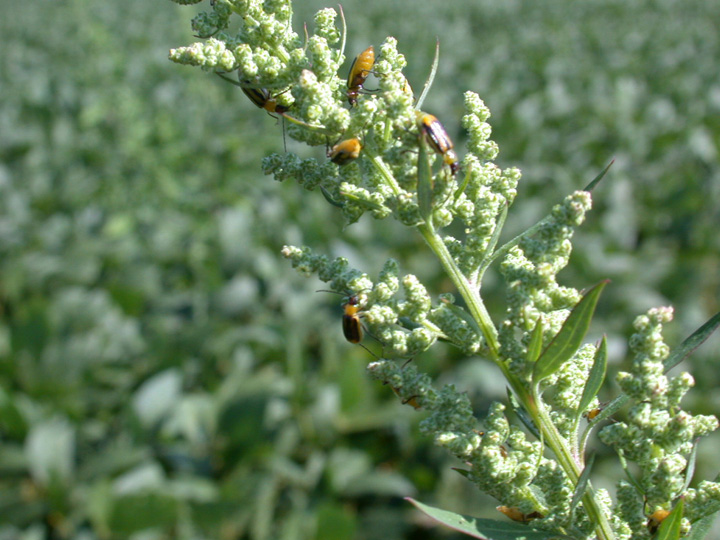Much of the corn has pollinated throughout the state, but there are the late-planted fields that have yet to do so. Those are the fields that potentially act as a “trap crop” for various insect pests as they look for an excellent protein source…pollen. One particular insect, known by some producers as silk beetles, is the western corn rootworm beetle. In most years, this is the time for the peak number of beetles present in the state. In fact, for research trials we deliberately plant corn late the year before in an attempt to lure pollen-feeding female beetles into the crop so there will be plenty of eggs in second year corn. However, beetle numbers are much lower than they used to be several years ago. Because of this, some producers have let their guard down, only to later regret their decision to not protect their corn from larval damage. True, that lower beetle numbers present reduced risks to next year’s corn roots. Yet, understand, that there is still a risk! Left unchecked, the rootworm beetle can quickly and easily return to high populations in localized patches.
It goes without saying, fewer beetles will lay fewer eggs. Of course, the only way to know risk for next year, is to assess rootworm beetle populations NOW, on a field-by-field basis. Unlike some other pest insects, rootworm beetles do a lot of feeding as adults. Rootworm beetles, are pollen feeders, and while corn pollen may be a staple, it’s far from the only food source. So, whether in weedy soybean or wheat stubble fields, pollen from a multitude of weeds (e.g., foxtail, volunteer corn, ragweed, lambsquarters, pigweed, mustards, etc.) will draw them in to feed. These too are “trap crops” and will likely encourage significant egg laying for next year’s corn roots leading to unexpected lodging. In other words, another reason to keep weed control in mind. Especially if one wants to plant corn without Bt-rootworm traits. A quick look in pollen-heavy areas now, can save many frustrating hours picking lodged corn next year!
Happy scouting!







